-
 Bitcoin
Bitcoin $118400
0.47% -
 Ethereum
Ethereum $3836
2.20% -
 XRP
XRP $3.157
2.98% -
 Tether USDt
Tether USDt $0.9999
-0.03% -
 BNB
BNB $801.5
1.31% -
 Solana
Solana $180.9
2.07% -
 USDC
USDC $0.9999
-0.02% -
 Dogecoin
Dogecoin $0.2225
2.50% -
 TRON
TRON $0.3285
-1.02% -
 Cardano
Cardano $0.7789
2.60% -
 Hyperliquid
Hyperliquid $43.60
2.39% -
 Sui
Sui $3.892
4.41% -
 Stellar
Stellar $0.4229
3.34% -
 Chainlink
Chainlink $18.01
3.98% -
 Hedera
Hedera $0.2745
6.77% -
 Bitcoin Cash
Bitcoin Cash $582.3
3.38% -
 Avalanche
Avalanche $23.77
1.04% -
 Ethena USDe
Ethena USDe $1.001
0.01% -
 Toncoin
Toncoin $3.493
3.59% -
 Litecoin
Litecoin $110.0
2.48% -
 UNUS SED LEO
UNUS SED LEO $8.936
-0.37% -
 Shiba Inu
Shiba Inu $0.00001304
2.49% -
 Uniswap
Uniswap $9.999
1.09% -
 Polkadot
Polkadot $3.897
3.26% -
 Monero
Monero $308.6
-0.83% -
 Dai
Dai $0.9999
-0.01% -
 Bitget Token
Bitget Token $4.504
-0.04% -
 Pepe
Pepe $0.00001154
2.95% -
 Cronos
Cronos $0.1471
3.06% -
 Ethena
Ethena $0.6691
19.53%
The starting point of the low-level golden cross of the monthly KDJ combined with the daily line's large-volume medium-yang
A monthly KDJ golden cross below 20, confirmed by a high-volume medium-yang daily candle, signals a strong, low-risk entry for long-term crypto bulls.
Jul 30, 2025 at 07:21 am
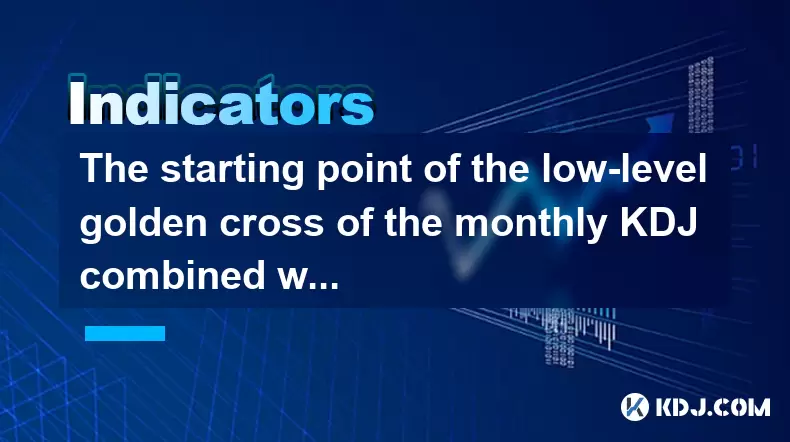
Understanding the Golden Cross in Monthly KDJ
The golden cross in technical analysis refers to the moment when the K line crosses above the D line within the KDJ indicator, especially when both are at a relatively low level. In the context of the monthly KDJ, this signal carries substantial weight due to the longer time frame. A low-level golden cross suggests that oversold conditions may be reversing, indicating a potential shift from a bearish to a bullish trend. The KDJ indicator consists of three lines: K (fast stochastic), D (slow stochastic), and J (divergence value). When the K line crosses above the D line below 20, it is considered a strong buy signal, particularly on a monthly chart where false signals are less frequent.
For cryptocurrency traders, identifying this pattern requires consistent monitoring of monthly candlestick charts across major assets like Bitcoin (BTC) or Ethereum (ETH). Traders should access platforms such as TradingView or Binance’s advanced charting tools, select the monthly timeframe, and apply the KDJ indicator. It's essential to confirm that both K and D values are below 20 before the crossover occurs. This ensures the signal originates from an oversold zone, increasing its reliability. The monthly golden cross is rare and often marks the beginning of extended bullish cycles in crypto markets, historically aligning with macro bottom formations.
Interpreting the Daily Chart’s Large-Volume Medium-Yang Candle
While the monthly KDJ provides a macro-level signal, confirmation is needed on lower timeframes. The appearance of a large-volume medium-yang candle on the daily chart serves as a critical validating factor. A "medium-yang" candle refers to a green (bullish) candlestick that is neither extremely long nor short—typically closing in the upper half of its range, showing sustained buying pressure without exhaustion.
The large volume accompanying this candle is crucial. In crypto trading, volume reflects market participation. A surge in volume during a bullish candle indicates strong institutional or whale activity, suggesting conviction behind the price move. To analyze this, traders should:
- Open the daily chart of the asset in question.
- Locate the most recent completed candle.
- Confirm it is a green (yang) candle with a body occupying 50% to 70% of the total range.
- Check the volume bar beneath the candle—compare it to the 10-day and 30-day average volume. If current volume exceeds both by at least 1.5 times, it qualifies as large volume.
This combination implies that the market is transitioning from accumulation to markup phase, especially when aligned with the monthly KDJ golden cross.
Synchronizing Monthly and Daily Signals
The true power of this setup lies in the convergence of signals across timeframes. A monthly KDJ golden cross establishes a long-term bullish bias, but entering a position immediately may be premature without short-term confirmation. The daily large-volume medium-yang candle acts as that confirmation.
To verify alignment:
- Ensure the monthly KDJ golden cross has occurred in the current or previous month.
- Check that the daily candle forming the large-volume medium-yang appears after the monthly signal.
- Confirm that price has not already surged excessively—ideally, the daily candle should be near key support or a congestion zone.
This multi-timeframe confluence reduces false entries. For example, if BTC shows a monthly KDJ golden cross in April and a high-volume green candle forms on April 25th, it suggests momentum is building. Traders can use this to time entries, especially if the candle closes above the 20-day moving average.
Practical Steps to Identify and Act on the Signal
Executing a trade based on this dual-signal strategy requires precision. Follow these steps carefully:
- Launch a crypto charting platform and load the monthly chart of your target asset.
- Apply the KDJ indicator with default settings (9,3,3).
- Identify if the K line has crossed above the D line, and both are below 20.
- Switch to the daily chart and scroll to the most recent completed candle.
- Assess the candle’s color, body size, and volume.
- Use the volume profile tool to compare current volume with recent averages.
- If all conditions are met, consider initiating a position.
For entry execution:
- Place a limit buy order slightly above the daily candle’s close to confirm continuation.
- Set a stop-loss just below the candle’s low to manage downside risk.
- Use on-chain data tools like Glassnode or CryptoQuant to verify if exchange outflows support accumulation.
This method avoids emotional trading by relying on objective, measurable criteria.
Risk Management and Position Sizing
Even with strong signals, risk must be controlled. The monthly KDJ golden cross combined with daily large-volume action does not guarantee success. Cryptocurrency markets are volatile and susceptible to external shocks.
To manage exposure:
- Allocate no more than 2% of total portfolio value to a single trade based on this signal.
- Avoid leveraging unless using hedged strategies.
- Monitor funding rates on futures markets—if excessively positive, it may indicate over-leverage and a potential pullback.
- Track whale wallet movements via blockchain explorers to detect sudden sell-offs.
Position sizing should reflect the long-term nature of the monthly signal. A portion of the position can be entered immediately upon daily confirmation, with additional entries allowed if price retraces to key moving averages like the 50-day or 100-day EMA.
Frequently Asked Questions
What is the default KDJ setting for detecting the golden cross on monthly charts?
The standard KDJ parameters are (9, 3, 3)—9-period stochastic, 3-period smoothing for K, and 3-period smoothing for D. These settings are widely accepted across crypto charting platforms and provide a balanced sensitivity for monthly analysis.
How do I distinguish a medium-yang candle from a long-yang or small-yang candle?
A medium-yang candle has a body length that is approximately 50% to 70% of the total candle range. Measure from the open to the close (the body) and compare it to the full range (high to low). If the body is less than 50%, it's small-yang; if over 70%, it's long-yang.
Can this signal appear during a bear market?
Yes. The signal can form in a bear market, but its reliability increases when accompanied by declining trading volume during downtrends and a sudden spike on the medium-yang candle. Always cross-verify with on-chain metrics to assess whether the move reflects real accumulation.
Is the KDJ indicator effective for altcoins?
The KDJ can be applied to altcoins, but liquidity and volatility affect its accuracy. For low-cap altcoins, the monthly signal may be distorted by low trading volume or pump-and-dump activity. It's safer to use this strategy on high-liquidity assets like BTC, ETH, or BNB.
Disclaimer:info@kdj.com
The information provided is not trading advice. kdj.com does not assume any responsibility for any investments made based on the information provided in this article. Cryptocurrencies are highly volatile and it is highly recommended that you invest with caution after thorough research!
If you believe that the content used on this website infringes your copyright, please contact us immediately (info@kdj.com) and we will delete it promptly.
- Ozak AI: Can This Underdog Crypto Achieve a Bull Run to $1?
- 2025-07-31 22:30:12
- Coinbase Breach: Navigating Insider Risk and Bolstering Security
- 2025-07-31 23:11:55
- Bitcoin Rebounds, WeWake Presale Gains Traction: What's the Buzz?
- 2025-07-31 22:30:12
- Bitcoin, Altcoins, and Volume Watchlists: Decoding the Crypto Landscape
- 2025-07-31 23:11:55
- Tron, Fartcoin, and BlockchainFX: What's Trending (and What's Not) in the Crypto World
- 2025-07-31 21:32:19
- Bitcoin, Corporate Investments, and Sustainability: A New Era or Fleeting Fad?
- 2025-07-31 20:50:14
Related knowledge

How can you use the MACD histogram to determine trend strength?
Jul 31,2025 at 11:10pm
Understanding the MACD Histogram and Its ComponentsThe MACD (Moving Average Convergence Divergence) histogram is a visual representation of the differ...
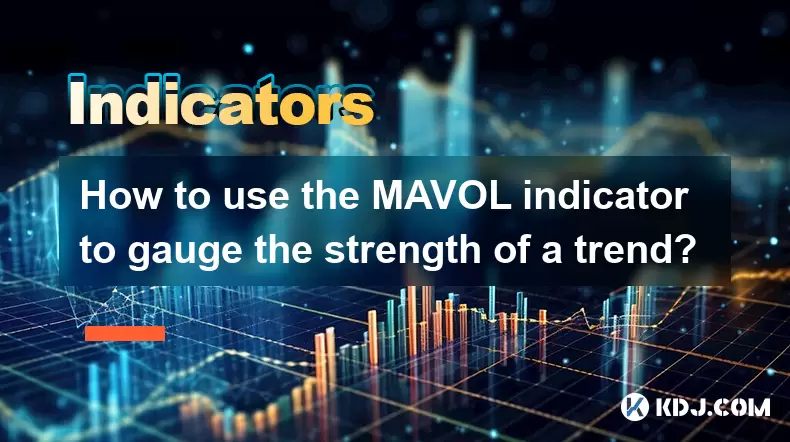
How to use the MAVOL indicator to gauge the strength of a trend?
Jul 31,2025 at 09:57pm
Understanding the MAVOL Indicator in Cryptocurrency TradingThe MAVOL indicator, short for Moving Average of Volume, is a technical analysis tool widel...
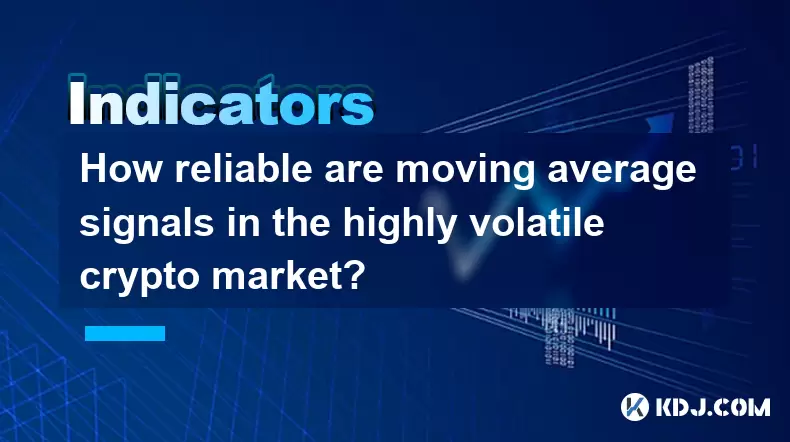
How reliable are moving average signals in the highly volatile crypto market?
Jul 31,2025 at 08:36pm
Understanding Moving Averages in Cryptocurrency TradingMoving averages (MAs) are among the most widely used technical indicators in the cryptocurrency...
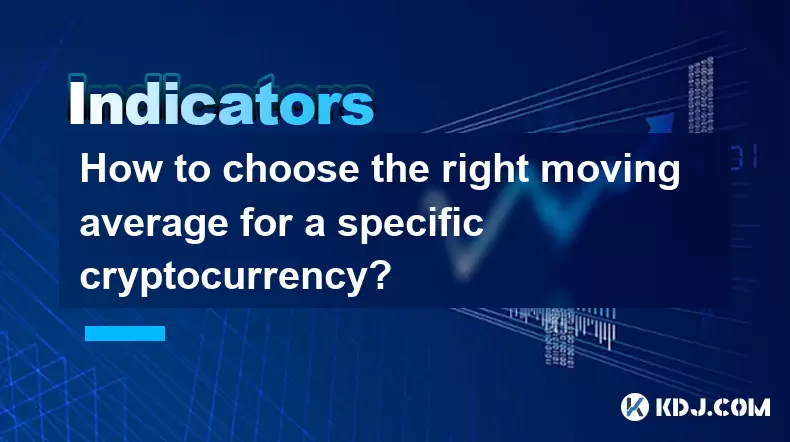
How to choose the right moving average for a specific cryptocurrency?
Jul 31,2025 at 10:29pm
Understanding the Role of Moving Averages in Cryptocurrency TradingMoving averages are foundational tools in technical analysis, widely used by crypto...
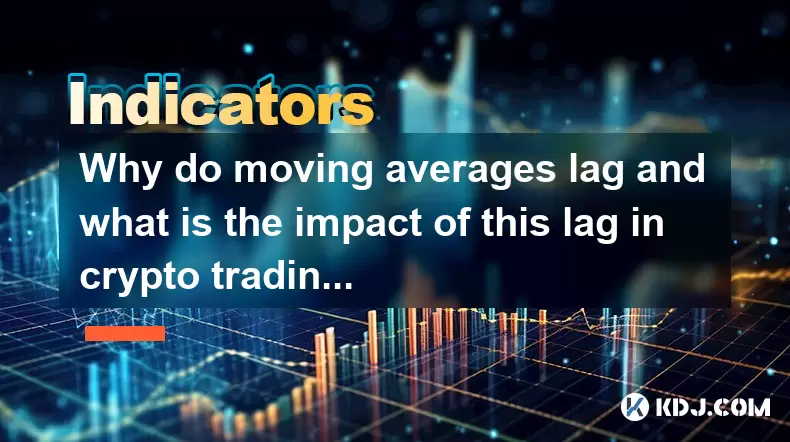
Why do moving averages lag and what is the impact of this lag in crypto trading?
Jul 31,2025 at 08:07pm
Understanding the Concept of Moving Averages in Crypto TradingMoving averages are among the most widely used technical indicators in cryptocurrency tr...
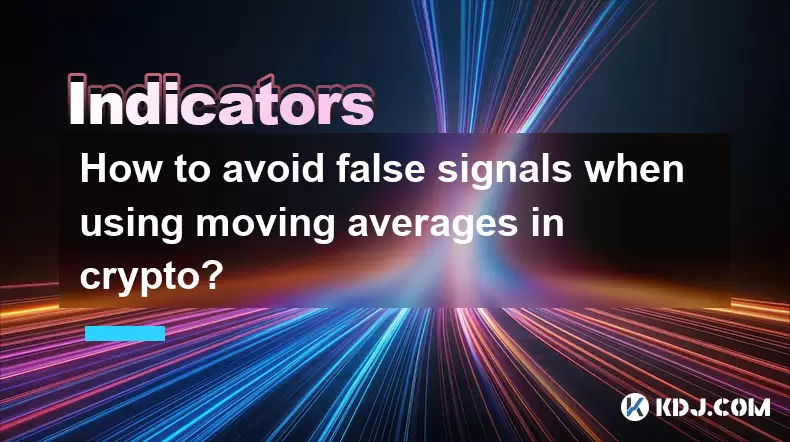
How to avoid false signals when using moving averages in crypto?
Jul 31,2025 at 11:29pm
Understanding Moving Averages in Cryptocurrency TradingMoving averages are among the most widely used technical indicators in the cryptocurrency marke...

How can you use the MACD histogram to determine trend strength?
Jul 31,2025 at 11:10pm
Understanding the MACD Histogram and Its ComponentsThe MACD (Moving Average Convergence Divergence) histogram is a visual representation of the differ...

How to use the MAVOL indicator to gauge the strength of a trend?
Jul 31,2025 at 09:57pm
Understanding the MAVOL Indicator in Cryptocurrency TradingThe MAVOL indicator, short for Moving Average of Volume, is a technical analysis tool widel...

How reliable are moving average signals in the highly volatile crypto market?
Jul 31,2025 at 08:36pm
Understanding Moving Averages in Cryptocurrency TradingMoving averages (MAs) are among the most widely used technical indicators in the cryptocurrency...

How to choose the right moving average for a specific cryptocurrency?
Jul 31,2025 at 10:29pm
Understanding the Role of Moving Averages in Cryptocurrency TradingMoving averages are foundational tools in technical analysis, widely used by crypto...

Why do moving averages lag and what is the impact of this lag in crypto trading?
Jul 31,2025 at 08:07pm
Understanding the Concept of Moving Averages in Crypto TradingMoving averages are among the most widely used technical indicators in cryptocurrency tr...

How to avoid false signals when using moving averages in crypto?
Jul 31,2025 at 11:29pm
Understanding Moving Averages in Cryptocurrency TradingMoving averages are among the most widely used technical indicators in the cryptocurrency marke...
See all articles

























































































